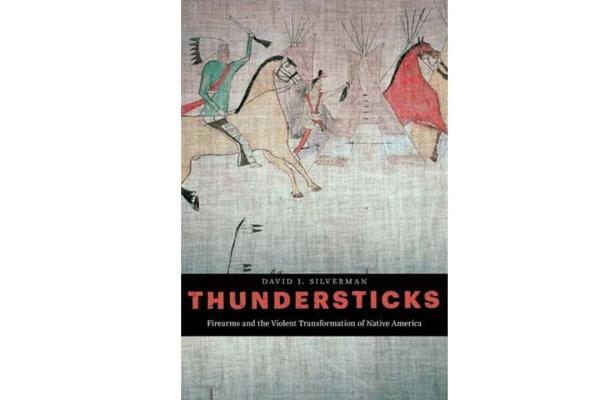The Ten Commandments. China’s emerging global economy. The impact of firearms on Native American culture. These topics may seem to have little in common—except that they are all among the prolific subjects addressed in books by Columbian College faculty this year. From the history of race and caste in Latin America to the role mathematics plays in our government and our election system, you’ll discover thought-provoking and timely titles in this scholarly library. The following is a sampling of recent books.
Before Mestizaje: The Frontiers of Race and Caste in Colonial Mexico
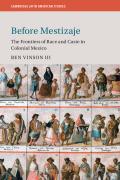 Columbian College Dean Ben Vinson, III opens new dimensions on the history of race and caste in Latin America in this examination of the extreme caste groups of Mexico. Focusing on lobos, moriscos and coyotes, he details the experiences of different races and castes while tracing the implications of their lives in the colonial world—exposing the connection between mestizaje (Latin America's modern ideology of racial mixture) and the colonial caste system. Relying on his extensive review of primary sources—bigamy records, marriage cases, census documents and inquisition reports—he uses Mexico as a case study to explore how the concept of caste evolved by studying the most extreme racial mixtures in society.
Columbian College Dean Ben Vinson, III opens new dimensions on the history of race and caste in Latin America in this examination of the extreme caste groups of Mexico. Focusing on lobos, moriscos and coyotes, he details the experiences of different races and castes while tracing the implications of their lives in the colonial world—exposing the connection between mestizaje (Latin America's modern ideology of racial mixture) and the colonial caste system. Relying on his extensive review of primary sources—bigamy records, marriage cases, census documents and inquisition reports—he uses Mexico as a case study to explore how the concept of caste evolved by studying the most extreme racial mixtures in society.
Set in Stone: America's Embrace of the Ten Commandments
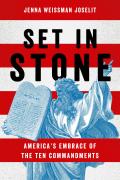 Jenna Weissman Joselit, Charles E. Smith Professor of Judaic Studies and professor of history, situates the Ten Commandments within the fabric of American history. She reveals its influence on our national identity—from the 1860 archaeologists who claimed to have discovered pieces of the tablets in Ohio to politicians who proposed them as citizenship tests to psychotherapists who touted them as psychotherapeutic tool. She travels to Indian burial mounds in Ohio and sand dunes in California where researchers have uncovered centuries-old monuments to the Biblical directives. She shows how the Ten Commandments became the public face of the American Jewish community, especially during its bid for acceptance in the United States, and provides context to contemporary debates on public displays of the scriptural passage.
Jenna Weissman Joselit, Charles E. Smith Professor of Judaic Studies and professor of history, situates the Ten Commandments within the fabric of American history. She reveals its influence on our national identity—from the 1860 archaeologists who claimed to have discovered pieces of the tablets in Ohio to politicians who proposed them as citizenship tests to psychotherapists who touted them as psychotherapeutic tool. She travels to Indian burial mounds in Ohio and sand dunes in California where researchers have uncovered centuries-old monuments to the Biblical directives. She shows how the Ten Commandments became the public face of the American Jewish community, especially during its bid for acceptance in the United States, and provides context to contemporary debates on public displays of the scriptural passage.
The Mathematics of Politics, 2nd Edition
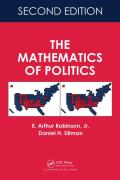 For anyone who remembers endlessly reciting multiplication tables in elementary school, it’s hard believe that mathematics is anything more than the study of numbers, operations and formulas. But in the second edition of their popular book, Professors of Mathematics E. Arthur Robinson and Daniel H. Ullman take math where it’s rarely gone before: into the realm of politics. The authors apply mathematical reasoning to politics and explain the role math plays in our government and our election system. They examine the Electoral College and address political questions such as: Is there a mathematical formula for choosing election winners? How does math help apportion congressional seats? And can math be applied to decision-making in situations of conflict and uncertainty?
For anyone who remembers endlessly reciting multiplication tables in elementary school, it’s hard believe that mathematics is anything more than the study of numbers, operations and formulas. But in the second edition of their popular book, Professors of Mathematics E. Arthur Robinson and Daniel H. Ullman take math where it’s rarely gone before: into the realm of politics. The authors apply mathematical reasoning to politics and explain the role math plays in our government and our election system. They examine the Electoral College and address political questions such as: Is there a mathematical formula for choosing election winners? How does math help apportion congressional seats? And can math be applied to decision-making in situations of conflict and uncertainty?
Interactive Journalism: Hackers, Data and Code
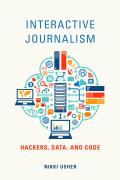
Interactive journalism has transformed the newsroom. Its visual storytelling techniques allow users to connect directly with the reporting of information. But as Assistant Professor of Media and Public Affairs Nikki Usher explains in Interactive Journalism: Hackers, Data and Code, today it stands at a nexus: part of the traditional newsroom, yet still novel enough to contribute innovative practices and thinking to the industry. Examining the impact of digital technology on reporting, photojournalism and graphics, Usher presents a comprehensive portrait of a new journalistic identity. Her eyewitness study of the field’s evolution and accomplishments ranges from the creation of Al Jazeera English to The New York Times' Pulitzer-winning innovations. She creates an illuminating, richly reported portrait of the people coding a revolution that may reverse the decline of traditional journalism.
Thundersticks: Firearms and the Violent Transformation of Native America
The adoption of firearms by American Indians between the 17th and 19th centuries marked a turning point in the history of North America’s indigenous peoples—a cultural earthquake so profound, says Professor of History David J. Silverman, that its impact has yet to be adequately measured. In Thundersticks, Silverman reframes our understanding of Indians’ historical relationship with guns. He argues against the popular notion that they prized these weapons more for the pyrotechnic terror guns inspired than for their efficiency as tools of war. Native peoples, Silverman insists, recognized the potential of firearms to assist them in their struggles against colonial forces—and against one another. He maintains that firearms empowered American Indians to pursue their interests and defend their political and economic autonomy over two centuries.
Spillover Effects of China Going Global
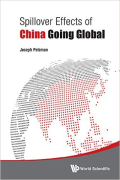 When the People's Republic of China was granted Most Favored Nation status by the United States in 1979, no one imagined the massive transformation the Chinese economy would make within just a few decades. In Spillover Effects of China Going Global, Professor of Economics Joseph Pelzman focuses on China's remarkable transition from being a “world factory” to the source of the world's new R&D and product design since the 1980s. He shows how the second largest world economy triggered unforeseen spillover effects beyond mass-labor production of durable and non-durable good, many of which—such as the provision of foreign aid to African, Latin American and Asian economies—will bring positive opportunities for much of the world in the 21st century.
When the People's Republic of China was granted Most Favored Nation status by the United States in 1979, no one imagined the massive transformation the Chinese economy would make within just a few decades. In Spillover Effects of China Going Global, Professor of Economics Joseph Pelzman focuses on China's remarkable transition from being a “world factory” to the source of the world's new R&D and product design since the 1980s. He shows how the second largest world economy triggered unforeseen spillover effects beyond mass-labor production of durable and non-durable good, many of which—such as the provision of foreign aid to African, Latin American and Asian economies—will bring positive opportunities for much of the world in the 21st century.
Three Stones Make a Wall: The Story of Archaeology
In Three Stones Make a Wall, Eric Cline, professor of classics, history and anthropology, traces the history of archaeology from its amateur beginnings to the cutting-edge science it is today. He takes the reader on a tour of major archaeological sites and discoveries, from Pompeii to Petra and Troy to the Terracotta Warriors. He also illustrates the personalities behind these digs, including Heinrich Schliemann, the former businessman who excavated Troy, and Mary Leakey, whose discoveries advanced our understanding of human origins. Along the way, he addresses the questions archaeologists are asked most often: How do you know where to dig? How are excavations actually done? How do you know how old something is? Who gets to keep what is found?



